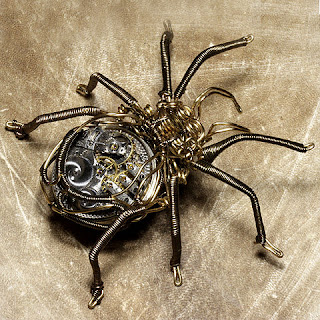Today I'm going to do something a bit different. I'm going to talk about how you can augment MS Word's ability to check grammar. Yes there are professional editing programs that do all this, and more, but sometimes you don't want to copy and paste your story into an online editor, especially if it's a 100,000 word novel!
Before I bought my new computer I had a macro for MS Word that highlighted "ly" adverbs, as well as other problem words, that clutter up your writing. For instance, "very", "that", "much".
I love the quotation, attributed to Mark Twain, "Substitute 'damn' every time you're inclined to write 'very'; your editor will delete it and the writing will be just as it should be."
Unfortunately, when I transfered my data over to my new computer I forgot my macros so they all went to the great macro heaven in the sky. Now keep them in Dropbox, lesson learnt.
This post has two parts. First, I'll show you the macros I use and then I'll go through how to use them in MS Word.
Let's get started!
The Macro: Finding "ly" Adverbs
The following macro will highlight all the "ly" words in your manuscript. I wanted to make it highlight the entire word, but at the moment it only highlights the "ly" part of it. Oh well, it works! The original macro, written by Subcortical over at Stackoverflow, can be found here: Microsoft Word Macro for highlighting multiple words.
Sub highlight_ly()
Options.DefaultHighlightColorIndex = wdYellow
Selection.Find.ClearFormatting
Selection.Find.Replacement.ClearFormatting
Selection.Find.Replacement.Highlight = True
With Selection.Find
.Text = "ly"
.Forward = True
.Wrap = wdFindContinue
.Format = True
.MatchCase = False
.MatchSuffix = True
.MatchWholeWord = False
.MatchWildcards = False
.MatchSoundsLike = False
.MatchAllWordForms = False
End With
Selection.Find.Execute Replace:=wdReplaceAll
End Sub
Here's another macro that finds, and highlights, words that often serve only to clutter text. The original macro was written by Subcortical and can be found in the same article I linked to, above.
Sub highlight_targets()
Dim range As range
Dim i As Long
Dim TargetList
TargetList = Array("very", "that") ' put list of terms to find here
For i = 0 To UBound(TargetList)
Set range = ActiveDocument.range
With range.Find
.Text = TargetList(i)
.Format = True
.MatchCase = True
.MatchWholeWord = True
.MatchWildcards = False
.MatchSoundsLike = False
.MatchAllWordForms = False
Do While .Execute(Forward:=True) = True
range.HighlightColorIndex = wdTurquoise
Loop
End With
Next
End Sub
Using the macros
I have MS Word 2007, so keep that in mind if you're using a different version.
1) Go into MS Word and click "View" on the ribbon.
2) On the far right of the ribbon you'll see MACROS. Click it.
3) A Macro dialog box pops up. Type in the macro name "highlight_ly" and click CREATE. This will bring you into the Microsoft Visual Basic editor.
4) Copy this text:
Options.DefaultHighlightColorIndex = wdYellow
Selection.Find.ClearFormatting
Selection.Find.Replacement.ClearFormatting
Selection.Find.Replacement.Highlight = True
With Selection.Find
.Text = "ly"
.Forward = True
.Wrap = wdFindContinue
.Format = True
.MatchCase = False
.MatchSuffix = True
.MatchWholeWord = False
.MatchWildcards = False
.MatchSoundsLike = False
.MatchAllWordForms = False
End With
Selection.Find.Execute Replace:=wdReplaceAll
Now paste it between "Sub highlight_ly" and "End Sub".
5) Save the file (Crtl + S) and exit the Microsoft Visual Basic editor.
6) In MS Word repeat steps (1) and (2). This time instead of typing in a name and pressing the create button, select "highlight_ly" and press RUN. All the words ending in "ly" should be highlighted in yellow.
If you would like to also highlight words such as "this" and "that" repeat steps (1) through (6) only this time for the macro "highlight_targets". Note that the "highlight_targets" macro can be modified to include whatever words you'd like to highlight. All you have to do is include the words in the TargetList array.
I hope that's clear! (I can hear folks grumbling, "Yea, clear as mud!") If you have questions, do ask, and if there are any macros you'd like to share, please do!
Other articles you might like:
- Penelope Trunk: Blogging And Branding
- How To Design A Great Looking Book Cover
- The Best Way To Build A Writer's Platform Is To Write
- Aftermath Of The Department of Justice Lawsuit: Amazon Customers Getting Refunds
Links:
- Here's a great article on the passive voice from The University of North Carolina.
Photo credit: Catherinette Rings Steampunk.


Thank you so much for these macros!
ReplyDeleteGlad you got some use out of them! This post is one of my most viewed but (as you can see!) least commented. Thanks for the feedback. :)
DeleteThanks, Karen! I wrote up several macros for writers this past weekend, and this post was a great help! I gave you a shout out in my blog post about it. :)
ReplyDeletehttp://jamigold.com/2014/03/ms-word-trick-using-macros-to-edit-and-polish/
Thanks Jami! I'm a big fan of your blog. And thanks for giving me the link, I'll give you a shout out as well (for whatever that's worth!). (grin)
DeleteThank you so much for sharing this, Karen! Jami referred me to your post when I mentioned wanting to learn how to do adverbs with macros. It worked great!
ReplyDeleteHi Christy, thanks so much for your comment! Until now this post has been one of my least popular, I'm thrilled that it was useful to you. :-) (And thanks Jami!)
DeleteYou're welcome! It's a great post and deserves kudos. :)
Delete* blush! *
DeleteHandy macro but how do I turn it off when I'm done?
ReplyDeleteThe macro won't run unless manually started. If you're completely done with the macro it can be deleted.
Delete